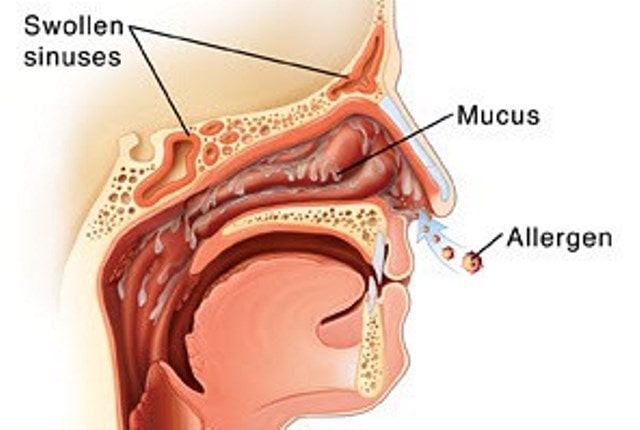What are the signs of ovulation or simply signs and symptoms of ovulation? If you are one of the girls who do not know when they are ovulating, be ready to learn everything about the signs of ovulation that might have been confusing you. We will help you by making them so clear and including cramping and discharge.
Signs of Ovulation – General Ovulation Signs
Ovulation in most women leaves a trail of signs behind it. Following the patterns that precede ovulation can be a great way to learn when to time so as to get pregnant or avoid pregnancy. Below we discuss some ovulation signs.
An Increase in Basal Body Temperature
Studies show that most women detect a slight rise in body temperature soon after ovulation. While using body temperature as a sign of ovulation, the basal body temperature of a person needs to be taken early in the morning. One has to have spent at least three hours prior to the monitoring asleep.
A basal body temperature thermometer is needed to do this. They also come with a user manual which should be followed for accurate results. The results of the basal temperature should be recorded in a basal temperature chart. If consistent tracking is done, an increase of up to 0.5degrees Celsius is likely to indicate that ovulation has occurred. Tracking several cycles will help form a predictable pattern that can be used to determine fertility.
There are a number of factors that could interfere with the body’s temperature. If these are at play, the charting may be affected. These include:
- Fever
- Restless sleep
- emotional disturbance,
- jet lag
- taking alcohol the previous night
- stress
- using electric blankets
If these are experienced, the increase in basal body temperature may be as a result of their effect. This can therefore not be used in isolation but together with other signs of ovulation.
Thickening of the Cervical Mucus
This is another sign that ovulation is occurring. Monitoring the secretions should start once the periods come to an end. The following pattern is likely to be observed:
- Immediately the menstrual cycle is over, there is little or no secretion. The little that is produced is sticky and thick. This indicates that ovulation is not about to happen.
- Before ovulation, there is increased vaginal mucus. This tends to be wet and slippery.
- During ovulation, the secretion is highest in quantity. The discharge is thicker and similar to raw egg white. If this is observed, it is a sure sign of ovulation.
This sign can be affected by a number of things. These include:
- Infections in the vagina
- Use of lubricants during intercourse
- Sexual arousal
- Breast feeding
- Douching
- Cervical surgery
Before coming to a conclusion based on the cervical mucus, it would be important to put these into consideration and learn if they could have an effect on the discharge.
Ovulation Pain
Some women experience pain during ovulation. This is usually one sided depending on which ovary is releasing the egg. The pain is experienced down the pelvic area and is similar to the one experienced during the periods.
Positive Blood Tests
A progesterone test conducted by a doctor can be used to tell whether ovulation has occurred. If it turns out positive, this is a sign that ovulation has occurred.
Acne Appearance
There is an increase in skin blemishes during ovulation. This is caused by changes in the level of hormones making the body produce more oil than is necessary. These oils are then released to the surface of the skin causing the acne. They can be seen on the nose, forehead and chin.
Like in other signs, acne can be caused by other factors. It should therefore not be used in isolation. It ought to be used together with other ovulation signs. Increase in the amount of blemishes on the skin is suggestive of existing ovulation.
Signs of Ovulation Discharge
If well mastered, amongst the signs of ovulation, monitoring discharge can be a telltale sign on when ovulation is likely to occur. The secretion of cervical discharge varies with the stages of the monthly cycle. When it is thickest and most elastic is when ovulation occurs.
As its production increases, the discharge can be easily spotted on the inner garments.
Signs of Ovulation Cramping
Amongst the signs of ovulation, cramping is one. This is when women experience a pain similar to that experienced during periods. There are distinguishing factors though. The cramping during ovulation is only experienced on one side of the abdomen depending on which side the ovary has been released from. It also lasts a shorter time than that of menstruation and is accompanied by no bleeding. It can be accompanied by a discharge though.
Signs of Ovulation on Clomid
When there are problems with ovulation, clomid drug is prescribed to stimulate ovulation. This is mostly when a woman has irregular periods or her periods are not preceded by ovulation. The side effects of clomid are similar to some ovulation signs. These include mood swings, hot flashes, nausea and breast tenderness. Another adverse side effect is that for one who is taking clomid, it causes the cervical mucus to dry up.
To avoid confusion, one may need to use an ovulation predictor kit or visit the doctor so he can do an ultra sound scan to see how well clomid is helping you ovulate.
Physical Signs of Ovulation
The physical signs of ovulation include:
- Tenderness of the breasts: This is caused by an increase in progesterone levels.
- Cramps on the abdomen: Pain can be felt on the lower abdomen when ovulation is taking place.
- An increase in vagina discharge: Cervical mucus happens to increase in amount and density during ovulation
- Firmness of the cervix: This can be felt and is different from the non-ovulating phase when it is usually soft.
- Bloating: this comes up as a result of an increased water retention capacity. This is usually caused by the high levels of progesterone hormones.
While these signs work, it is possible for them not to be all on point during every cycle. Combining at least three symptoms to determine when ovulation is occurring would be more reliable. Also worth noting is the fact that different women experience different signs. Each woman’s case is a unique one.
Suggested Further Reading:
- When Does a Woman Ovulate or When Does Ovulation Occur?
- What Happens During Ovulation & After Ovulation
- Symptoms of Ovulation – Physical, Cramps & Pre-Ovulation Signs
- Spotting During Ovulation – Before, Around & After Ovulation
- Post Ovulation Symptoms & How Do You Know When You Are Ovulating
- Ovulation Pain – Signs & Symptoms, Severe, Lower Pain Back
- Pain during Ovulation – Before, During, After, Breast & Back Pain
- Cramping After Ovulation – Is it a Normal or A Pregnancy Signs?
- Ovulation after Miscarriage – When, After How Long, Signs
- Ovulation Test – Positive, How to Use Test, When to Take


